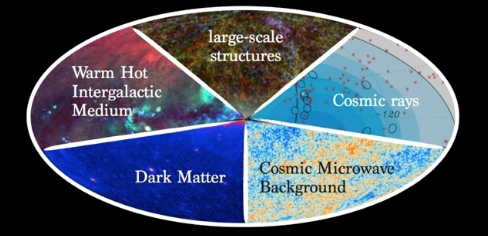Speaker
Sheldon Campbell
(The Ohio State University)
Description
Observations of cosmic gamma-ray or neutrino events is a Poisson point process on the sphere with 2D spatial correlations sourced by the skymap of astronomical sources. With this perspective, the statistical distribution of the power spectrum of observed events can be expressed exactly, depending only on the number of events N and the angular flux distribution of sources. This talk explores the consequences of correlated statistical noise between the power spectrum at different multipoles.
The particular case study considered is the search for a spectral line in a white diffuse background, using the mean-weighted power spectrum C. Anisotropy techniques are especially suited for detecting radiation from dim sources that are highly clustered. The statistical uncertainty of C has a term due to the correlated noise that dominates in the limit of low N. This has only a small effect on experiments with an instrument response like Fermi-LAT and event flux above 1 GeV. However, this term prevents improved instrument angular resolution from taming the noise in measurements of C. Thus, improved measurements of C for the diffuse gamma-ray background above 1 GeV requires larger effective areas. This fact, coupled with the fact that the statistical error of C decreases rapidly as 1/N, provides strong motivation for extending the lifetime of the Fermi satellite program.
Author
Sheldon Campbell
(The Ohio State University)
